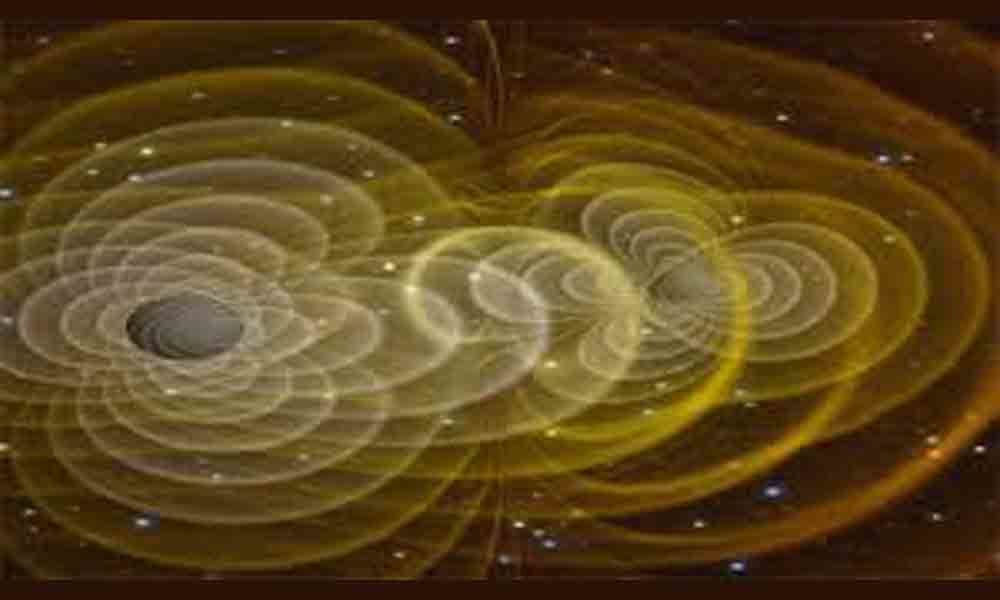Live
- IND vs AUS Boxing Day Test 2024: Sam Konstas Debuts, Travis Head’s Fitness in Question
- Congress Challenges Election Rule Amendments In Supreme Court
- Jaishankar’s US Visit: Key Diplomatic Engagement Amid Leadership Transition
- Orthodox Church Bishop Criticizes PM Modi’s Christmas Celebration Participation
- Janhvi style & grace takes centre stage
- Allu Arjun’s Pushpa 2 Becomes First Hindi-Dubbed Film to Cross Rs 700 Crore
- ‘Legally Veer’ pre-release event creates buzz
- ‘Chinni’ from ‘Daaku Maharaaj’ that strikes a chord with audience
- A raw and intense love story ‘Premikudu’ set to captivate audiences
- Apple iPhone 15 Now Available for Rs 26,999 on Flipkart – Grab the Deal Today!
Just In

Gravitational waves, ripples in the fabric of spacetime, leave behind plenty of "memories" that could help detect them even after they have passed, according to a study.
Gravitational waves, ripples in the fabric of spacetime, leave behind plenty of "memories" that could help detect them even after they have passed, according to a study.
These waves, first detected in 2016, offer a new window on the universe, with the potential to tell us about everything from the time following the Big Bang to more recent events in galaxy centres. The billion-dollar Laser Interferometer Gravitational-Wave Observatory (LIGO) detector watches 24/7 for gravitational waves to pass through the Earth.
"That gravitational waves can leave permanent changes to a detector after the gravitational waves have passed is one of the rather unusual predictions of general relativity," said Alexander Grant, doctoral candidate at Cornell University in the US. Physicists have long known that gravitational waves leave a memory on the particles along their path, and have identified five such memories. The study, published in the journal Physical Review D, found three more aftereffects of the passing of a gravitational wave, "persistent gravitational wave observables" that could someday help identify waves passing through the universe. Each new observable provides different ways of confirming the theory of general relativity and offers insight into the intrinsic properties of gravitational waves, Grant said.
Those properties could help extract information from the Cosmic Microwave Background -- the radiation left over from the Big Bang, researchers said. "We didn't anticipate the richness and diversity of what could be observed," said Eanna Flanagan, professor at Cornell University. The researchers identified three observables that show the effects of gravitational waves in a flat region in spacetime that experiences a burst of gravitational waves, after which it returns again to being a flat region.
The first observable, "curve deviation," is how much two accelerating observers separate from one another, compared to how observers with the same accelerations would separate from one another in a flat space undisturbed by a gravitational wave. The second observable, "holonomy," is obtained by transporting information about the linear and angular momentum of a particle along two different curves through the gravitational waves, and comparing the two different results.
The third looks at how gravitational waves affect the relative displacement of two particles when one of the particles has an intrinsic spin. Each of these observables is defined by the researchers in a way that could be measured by a detector. The detection procedures for curve deviation and the spinning particles are "relatively straightforward to perform," requiring only "a means of measuring separation and for the observers to keep track of their respective accelerations," researchers said. Detecting the holonomy observable would be more difficult, "Requiring two observers to measure the local curvature of spacetime," researchers said.

© 2024 Hyderabad Media House Limited/The Hans India. All rights reserved. Powered by hocalwire.com







